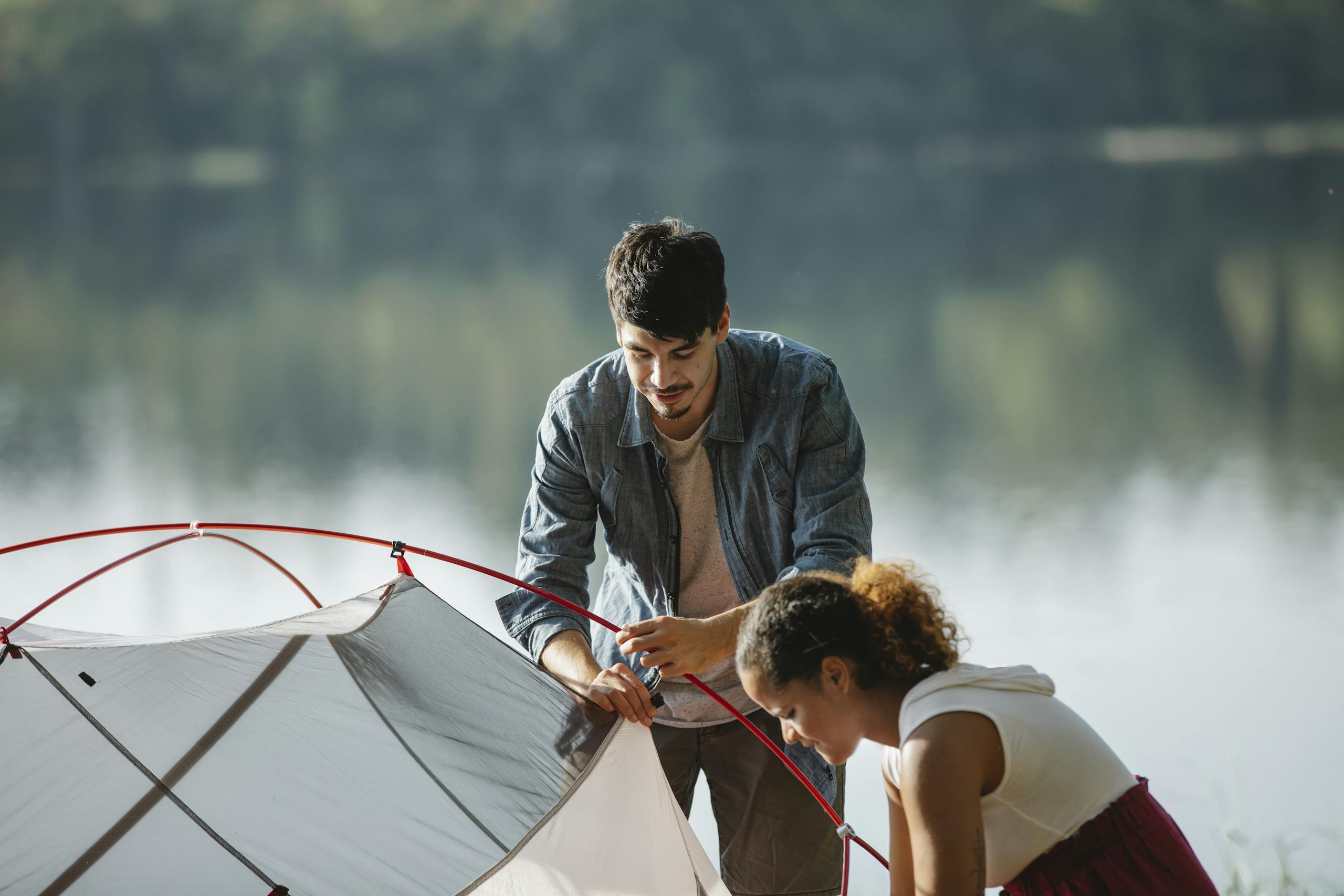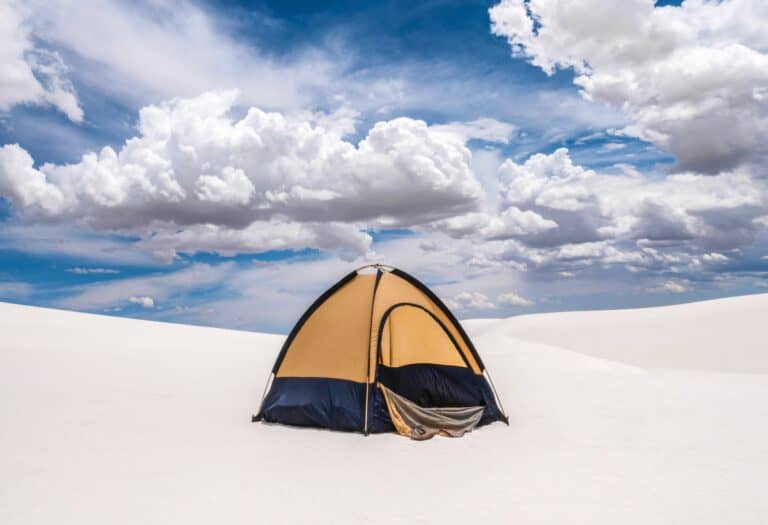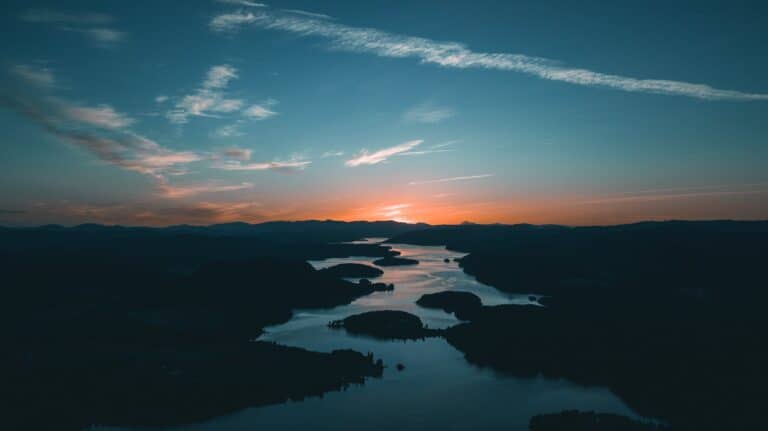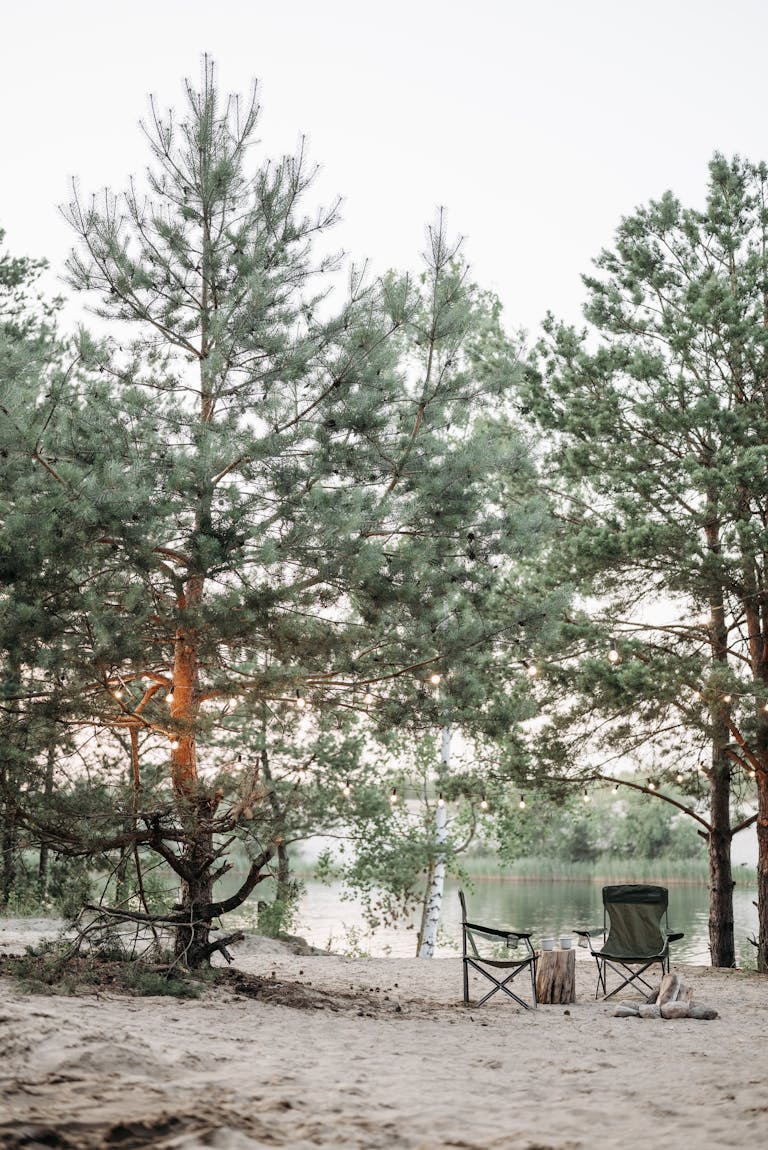10 Scenic Campgrounds: Your Ultimate Guide to Outdoor Spots
Selecting the ideal campground is pivotal in ensuring a successful outdoor experience. The first consideration should be the location. Campgrounds vary widely around natural attractions like lakes, rivers, mountains, and forests.
For instance, a campground near a lake or river can provide fishing, swimming, or kayaking opportunities if you love water activities. Conversely, if hiking is your passion, a site nestled in the foothills of a mountain range may be more suitable. Researching the geographical features of potential campgrounds can help align your choice with your recreational interests.
Another critical factor is the amenities offered at the campground. Some campgrounds have basic facilities like restrooms and picnic tables, while others may provide more luxurious options such as showers, electrical hookups, and even Wi-Fi. Understanding what amenities are available can significantly enhance your camping experience.
For example, families with young children might prefer campgrounds with playgrounds and organized activities. At the same time, seasoned campers might seek out more remote sites that offer solitude and a closer connection to nature. Additionally, checking reviews and ratings from previous campers can provide valuable insights into the campground’s condition and overall atmosphere.
Key Takeaways
- Consider the location, amenities, and activities available when choosing a campground.
- Essential camping gear includes a tent, sleeping bag, cooking equipment, and proper clothing for the weather.
- When cooking over a campfire, use a grate or foil to cook food, and always correctly extinguish the fire when finished.
- Safety precautions outdoors include informing others of your plans, carrying a first aid kit, and being aware of wildlife in the area.
- When exploring nature trails, stay on designated paths, be mindful of wildlife, and leave natural objects undisturbed.
- You should watch wildlife safely without disturbing the animals or their habitat.
- When capturing the scenery through photography, consider lighting, composition, and the natural beauty of the surroundings.
- Leave no trace principles emphasize leaving the environment as you found it, minimizing impact, and properly disposing of waste.
Essential Camping Gear
Shelter and Sleeping Arrangements
For instance, a three-season tent is ideal for most camping trips, providing adequate protection against rain and wind while remaining breathable during warmer months. Additionally, investing in a suitable sleeping bag rated for the expected temperatures can make a significant difference in ensuring a restful night’s sleep.
Cooking Essentials
Beyond shelter and sleeping arrangements, cooking gear is another vital component of camping equipment. A portable stove or grill can facilitate meal preparation outdoors, allowing campers to enjoy hot meals without relying solely on campfire cooking. Cookware that is lightweight and easy to clean, such as titanium or aluminum pots and pans, can enhance the cooking experience. Moreover, don’t forget essential utensils like spatulas, knives, and cutting boards.
Safety and Health Precautions
A well-stocked first aid kit is also crucial; it should include band-aids, antiseptic wipes, pain relievers, and any personal medications. This preparedness can be invaluable in case of minor injuries or health issues during your trip.
Campfire Cooking Tips
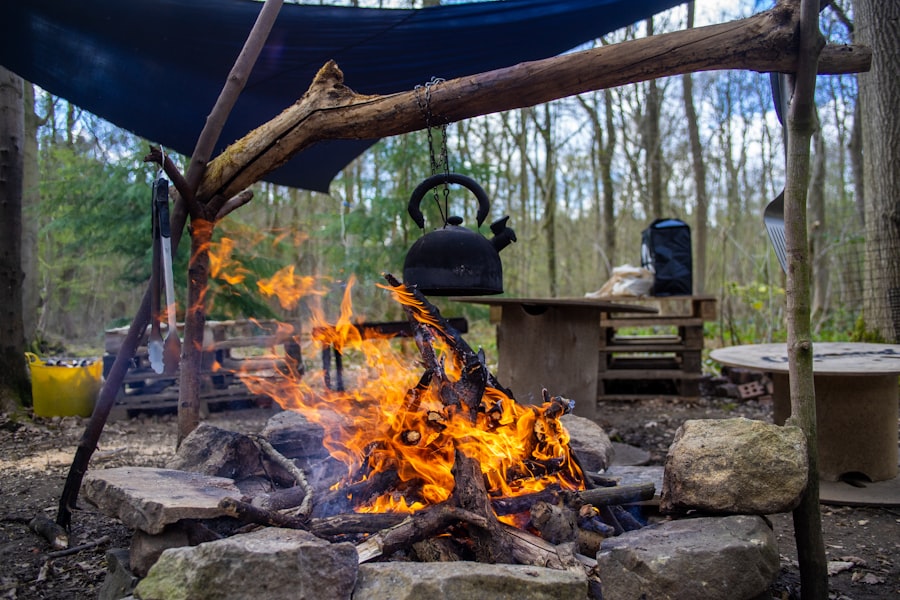
Cooking over an open flame is one of the quintessential camping experiences, but it requires some knowledge and skill to do it effectively. One of the first tips for successful campfire cooking is ensuring a well-constructed fire pit. You should always build a fire pit with stones or metal to prevent the flames from spreading.
Once you establish your fire, allow it to burn down until you have a bed of hot coals; this provides a more consistent heat source than flames alone. Planning can save time and effort at the campsite regarding food preparation. Pre-chopping vegetables or marinating meats at home can streamline the cooking process.
Foil packets are an excellent method for cooking various ingredients; wrap your chosen items in aluminum foil and place them on the coals for a delicious meal with minimal cleanup. Additionally, use skewers for grilling kebabs or roasting marshmallows for s’mores—a classic camping treat. Remember to keep safety in mind by using long-handled utensils to avoid burns. Be sure to cook your food thoroughly to prevent foodborne illnesses.
Safety Precautions in the Outdoors
| Activity | Safety Precautions |
|---|---|
| Hiking | Wear appropriate footwear, bring plenty of water, and be aware of wildlife. |
| Camping | Set up camp away from potential hazards, keep food stored properly, and be cautious with fire. |
| Cycling | Wear a helmet, follow traffic laws, and use hand signals when turning. |
| Rock Climbing | Use proper safety equipment, check gear before climbing, and be aware of weather conditions. |
Safety should always be a top priority when venturing into the wilderness. One of the most important precautions is to inform someone about your camping plans before you leave. Share your intended location, duration of stay, and expected return time.
This information can be crucial for search and rescue efforts in an emergency or if you fail to return as scheduled. Another essential aspect of outdoor safety is being aware of your surroundings and understanding potential hazards. Familiarize yourself with local wildlife and plants; knowing which animals are present can help avoid dangerous encounters.
For example, if you are camping in bear country, it is vital to store food properly in bear-proof containers or hang it from trees to minimize attractants. Additionally, understanding weather patterns can help you prepare for sudden changes in conditions. Carrying a weather radio or checking forecasts before you leave can provide updates that may influence your plans.
Exploring Nature Trails
Nature trails offer an excellent opportunity to immerse yourself in the beauty of the outdoors while engaging in physical activity. When exploring these trails, starting with a map or guidebook that outlines the route and highlights points of interest is beneficial. Many trails have signs indicating their difficulty level; selecting a trail that matches your fitness level will enhance your enjoyment and reduce the risk of injury.
As you hike along these paths, appreciate the diverse ecosystems you encounter. Different trails may lead through forests, meadows, or riversides, each offering unique flora and fauna. Observing seasonal changes can also add depth to your experience; for instance, springtime hikes may reveal blooming wildflowers, while autumn offers vibrant foliage.
Bringing binoculars can enhance your exploration by allowing you to observe distant wildlife without disturbing their natural behavior.
Wildlife Watching

Wildlife watching is one of the most rewarding aspects of camping and hiking in natural areas. You must approach wildlife observation with patience and respect to increase your chances of spotting animals in their natural habitats. Early mornings or late afternoons are often the best times for sightings when animals are most active.
Quietly moving through their environment without sudden movements or loud noises can help you blend into the surroundings. Understanding animal behavior can also enhance your wildlife-watching experience. For example, many animals have specific feeding times or routines you can anticipate based on their species.
Researching local wildlife before your trip can provide insights into what animals you might encounter and where they are likely to be found. Additionally, carrying a field guide or using a wildlife identification app can help you learn more about the species you observe, enriching your connection with nature.
Photography Tips for Capturing the Scenery
Capturing the beauty of nature through photography requires both technical skills and an artistic eye. One fundamental tip is to pay attention to lighting conditions; early morning and late afternoon light often provides softer shadows and warmer tones that enhance landscape photos. The golden hour—shortly after sunrise or before sunset—can create stunning effects that transform ordinary scenes into extraordinary images.
Composition is another critical element in photography. Utilizing techniques such as the rule of thirds can help create balanced images that draw viewers’ attention to focal points within the frame. Experimenting with different angles and perspectives can yield unique results; for instance, shooting from a low angle can emphasize foreground elements like flowers or rocks while capturing expansive backgrounds.
Additionally, incorporating leading lines—such as trails or rivers—can guide the viewer’s eye through the photograph, creating depth and interest.
10 Scenic Campgrounds with Breathtaking Views
- Yosemite National Park, California – Famous for its granite cliffs, waterfalls, and giant sequoias, Yosemite offers campgrounds like Upper Pines, which provide stunning views of El Capitan and Half Dome.
- Valley of Fire State Park, Nevada—Known for its dramatic red sandstone formations, this park features campgrounds such as Arch Rock and Atlatl Rock.
- Assateague Island National Seashore, Maryland– Camp on the beach and wake up to wild horses roaming along the shore.
- Salmon River Campground, Idaho – Located in the Sawtooth National Forest, this site boasts stunning mountain views and access to outdoor activities like rafting and hiking.
- Jedediah Smith Campground, California—Nestled among majestic redwoods, this campground offers a serene forest experience. Visitors can enjoy hiking, swimming, and fishing.
- North Rim Campground, Arizona – Situated in Grand Canyon National Park, this campground provides breathtaking canyon vistas.
- Kayenta Campground, Utah – Located in Dead Horse Point State Park, this site offers panoramic views of the Colorado River and rugged red cliffs. Yurts are available for $150 per night.
- Long Point Park, Florida – A peaceful riverside retreat near the Sebastian Inlet, perfect for fishing and nature enthusiasts. Great for launching kayaks. There is also a boat launch, and waterfront sites are available.
- Sebastian Inlet State Park, Florida—This campground features waterfront camping with easy access to the fishing pier and beach. The surf is usually up, and pompano can be caught right from the shore when the temperatures are low on the northern seaboard.
- Jetty Park, Cape Canaveral, Florida – A unique spot where you can watch rockets launch and cruise ships get underway. My favorite campsites for tent camping under the canopies of mangrove trees. Cabins are also available. All rates are daily.
Leave No Trace Principles
The Leave No Trace principles are guidelines for minimizing human impact on natural environments while enjoying outdoor activities. The first principle emphasizes planning and preparing for your trip by researching regulations and understanding local ecosystems. This preparation helps campers respect wildlife habitats and follow established campfire and waste disposal guidelines.
Another critical aspect of Leave No Trace is respecting wildlife by observing animals from a distance without disturbing their natural behaviors or habitats. This principle extends to minimizing noise pollution; keeping conversations quiet allows others to enjoy the serenity of nature while also reducing stress on wildlife. Additionally, when it comes to waste management, following proper disposal methods—such as packing out all trash and using designated restroom facilities—ensures that natural areas remain pristine for future visitors.
Campers preserve nature’s beauty for generations by adhering to these principles while responsibly enjoying their outdoor adventures.
If you want to elevate your camping experience and learn how to camp like a pro, check out this helpful article from The Stella Experience. They offer valuable tips and tricks for making the most of your time in the great outdoors. Additionally, if you need some destination ideas for your next car camping trip, don’t miss our article on the top 5 destinations for car camping. Happy camping!
FAQs
What are campgrounds?
Campgrounds are outdoor areas where people can set up tents, park RVs, or rent cabins to stay overnight. Some campgrounds allow car campers. And most facilities are equipped with restrooms, showers, and picnic areas.
What activities can you do at campgrounds?
Campgrounds offer a variety of outdoor activities such as hiking, fishing, swimming, and wildlife watching. Some campgrounds also have playgrounds, sports courts, and organized family activities.
How do you make reservations at campgrounds?
You can make reservations online through the campground’s website or a reservation system such as ReserveAmerica. Some campgrounds also allow walk-in reservations, but checking availability in advance is best, especially during peak seasons.
What should I bring to a campground?
When visiting a campground, it’s crucial to bring essentials such as a tent or RV, sleeping bags, cooking supplies, food, water, and appropriate clothing for the weather. Insect repellent, sunscreen, and a first aid kit are also good.
Are campgrounds pet-friendly?
Many campgrounds are pet-friendly, but it’s essential to check the specific rules and regulations before bringing pets. Some campgrounds may restrict the number of pets allowed, leash requirements, and designated pet-friendly areas.

